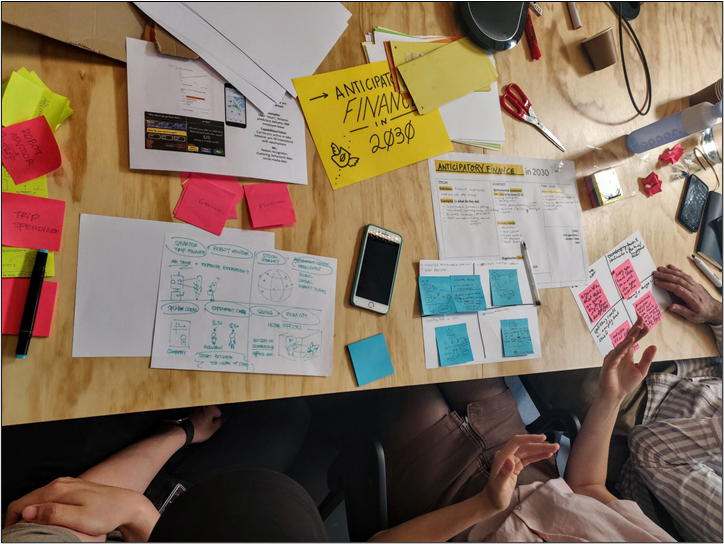Week 4 Overview: Ideate
Introduction

Ideation vs. Prototyping
The next two steps in the process are “Ideate” and “Prototype.” What do those words mean? What’s the difference between an idea and a prototype? The distinction is fuzzier than you might assume. For our purposes it’s probably easiest to say that these are lower and higher fidelity versions of the same concept. That’s not to say the prototypes you make next week will be hi-fi. They won’t be. But relative to what you come up with in your idea brainstorming they will be more refined. Read the first chapter in Prototyping for Designers to get a sense of why that is.
Course Competencies
- Develop a strong understanding of the design thinking process and how it can be applied in a variety of industry settings.
- Understand the terminology and conceptual models used in design disciplines.
- Recognize the ethical and social dilemmas and obligations of the practice of design.
- Diagnose common adoption barriers in individuals, groups and organizations.
- Participate in and lead innovation in creative and collaborative settings.
- Undertake complex and unstructured problem-solving challenges in unfamiliar domains.
- Identify the necessary skill sets and mindset to practice design thinking.
- Utilize a human-centered approach to research to understand and tackle complex social problems and build empathy for target audiences.
- Create prototypes and/or proof of concepts for user testing.
- Develop and test innovative ideas through a rapid iteration cycle.
Learning Objectives
- Practice rapid ideation.
- Learn to exercise the imagination in a way that’s both focused and unimpeded by logistical constraints.
- Practice collaboration.
- Become familiar with different types of design deliverables typically used in professional contexts.
To-Do List: (in sequential order)
- Ideation vs. Prototyping
- Reading/Viewing:
- Prototyping for Designers – ch 1: What is a Prototype?
- Reading/Viewing:
- Assignment:
- Brainstorming Documentation
- Reading/Viewing:
- How To Create Brainstorming Document?
- Reading/Viewing:
- Brainstorming Documentation
- Discussion Board:
- Weekly Progress Report